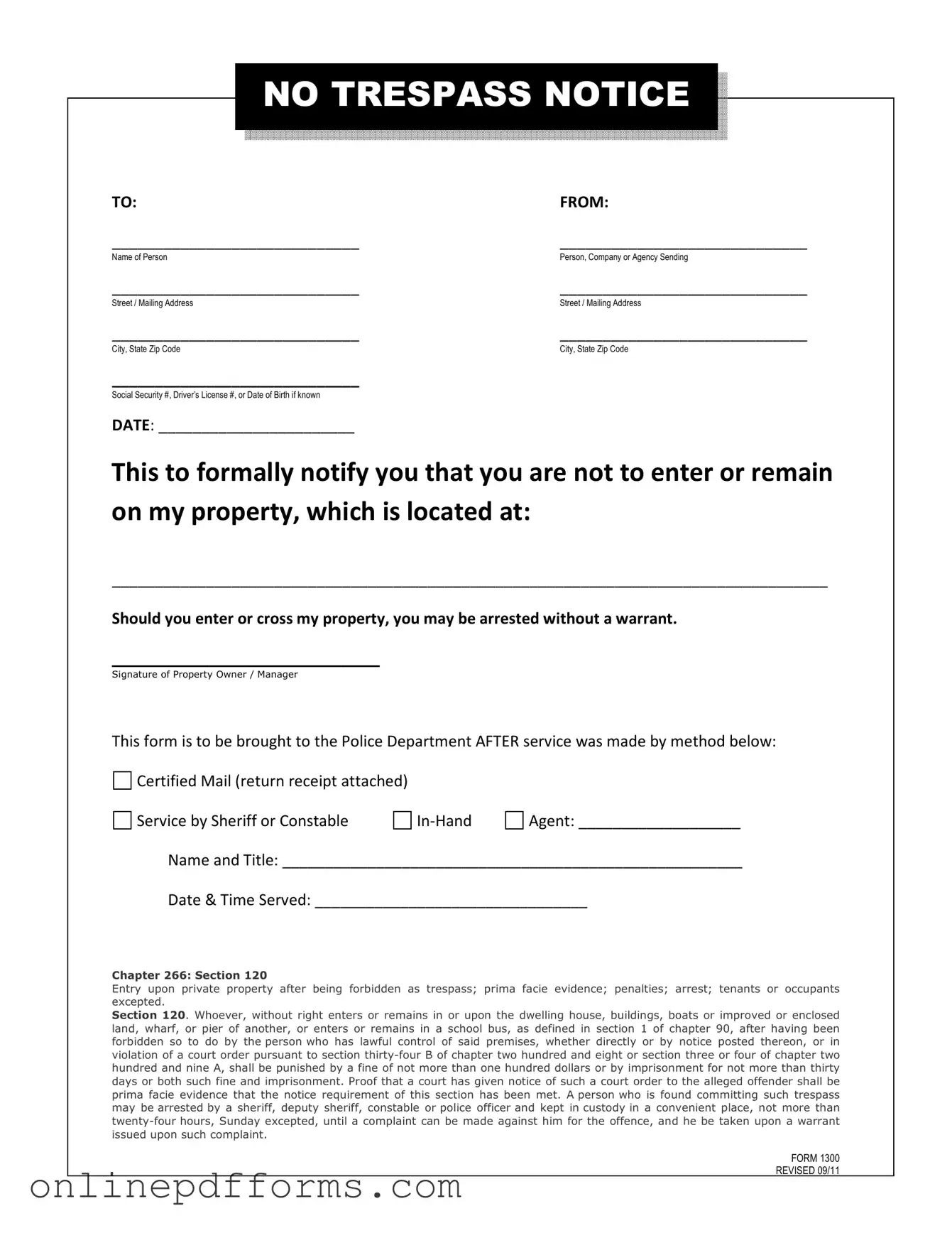A Cease and Desist Letter serves a similar purpose to a No Trespassing Letter, though it is often used in different contexts. This document is typically issued to an individual or organization to formally demand that they stop engaging in specific activities that infringe upon the rights of the sender. Like a No Trespassing Letter, it establishes clear boundaries and communicates the sender's intention to enforce their rights. Both documents can lead to legal action if the recipient does not comply, making them essential tools for protecting one’s property or rights.
A Trespass Notice is another document closely related to the No Trespassing Letter. It specifically addresses unauthorized entry onto a property and serves as a formal warning to the trespasser. While the No Trespassing Letter is often preemptive, a Trespass Notice may be issued after an incident has occurred. Both documents emphasize the importance of property rights and the potential legal consequences of ignoring those rights, reinforcing the idea that unauthorized access is not tolerated.
An Eviction Notice is a legal document that informs a tenant that they must vacate a rental property. While it primarily applies to landlord-tenant relationships, its function aligns with the No Trespassing Letter in that it establishes boundaries regarding property use. Both documents outline specific actions that can be taken if the recipient fails to comply. An Eviction Notice is a formal step in the process of reclaiming property, much like how a No Trespassing Letter can serve as a precursor to further legal action against trespassers.
A Property Line Dispute Letter is often used when neighbors disagree about the boundaries of their properties. This document seeks to clarify property lines and can serve as a precursor to legal action if the dispute escalates. Similar to a No Trespassing Letter, it aims to protect one’s property rights and establish clear communication about boundaries. Both documents can be instrumental in resolving conflicts before they require intervention from legal authorities.
In addition to various legal documents that protect property rights, an RV Bill of Sale form is crucial when transferring ownership of a Recreational Vehicle (RV). This document not only confirms the sale, providing essential details such as the purchase price and RV description, but it also safeguards both the buyer and seller from future liabilities. To learn more about how to properly document your RV transaction, check out Auto Bill of Sale Forms.
A Demand Letter can also be likened to a No Trespassing Letter, as both documents assert a right and call for a specific action. A Demand Letter typically requests payment or the cessation of a particular behavior, while a No Trespassing Letter demands that an individual refrain from entering a property. Both documents serve to formally communicate grievances and outline potential consequences if the demands are not met, emphasizing the importance of respecting rights and boundaries.
A Notice of Intent to Sue is another document that shares a common purpose with a No Trespassing Letter. This notice informs the recipient that the sender is considering legal action due to a perceived violation of rights or property. While a No Trespassing Letter serves as a warning against unauthorized entry, a Notice of Intent to Sue can be a step toward legal proceedings if the situation is not resolved. Both documents highlight the seriousness of the sender’s claims and the potential for legal consequences.
Finally, a Land Use Agreement can be seen as a more formalized document that outlines the terms under which one party can use another party's property. While a No Trespassing Letter clearly prohibits unauthorized access, a Land Use Agreement specifies the conditions under which access is permitted. Both documents serve to establish boundaries and protect property rights, though they do so in different contexts—one by prohibiting access and the other by defining permissible use.
